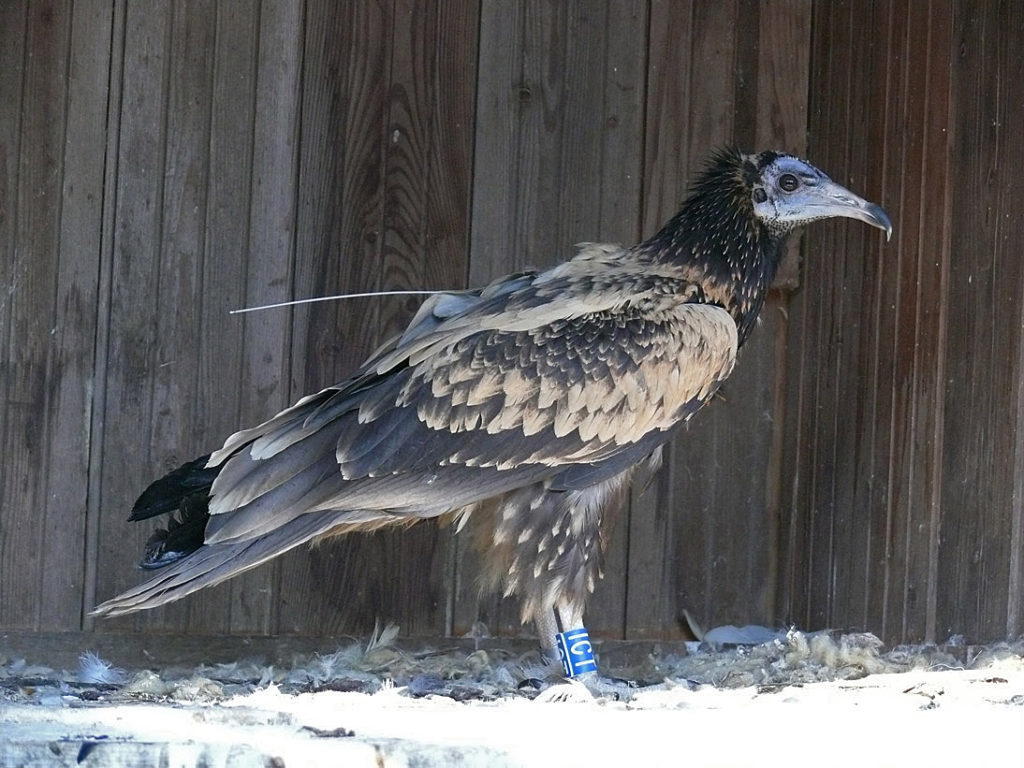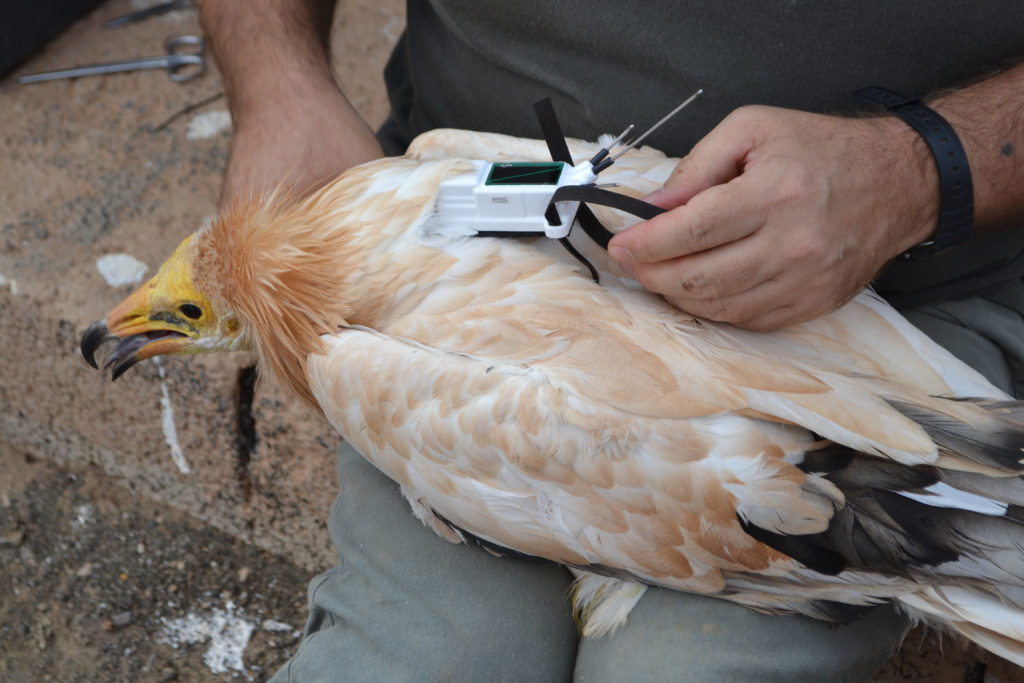An extremely important monitoring system in the field of research and conservation programmes is to equip the animals with satellite radios or data loggers that allow the constant tracking of their movements by collecting and transmitting GPS positions.

The LIFE Egyptian vulture project uses GPS/GSM data loggers to track the movements of a selection of wild vultures (ten in the Canary Islands and five in Italy) and the juvenile birds born in captivity who are then released (Action D.1).
The data provided by these remote monitoring devices offers important information on the areas frequented by the birds (home range), making it possible to identify any critical points in the nesting and resting areas (roost) and, in the case of the Egyptian vultures in Italy, to also acquire information on the migration route and identify any critical issues. They also allow the outcome of release operations to be assessed and for monitoring and support activities of the released birds to be carried out (Action C.7).
Data is gathered and processed by ISPRA (in Italy) and by the Government of the Canary Islands (in the Canary Islands).


